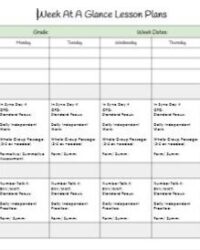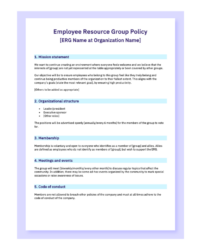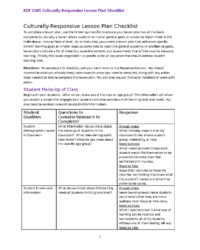Teaching in today’s diverse classrooms can feel like a juggling act, with students arriving at varying levels of prior knowledge, learning styles, and interests. It is a wonderful challenge to meet every student where they are and guide them towards success. This is precisely where the layered curriculum approach shines, offering a flexible and empowering framework that caters to individual needs while fostering a deep understanding of subject matter. Imagine a classroom where every student feels challenged but not overwhelmed, engaged but not bored.
This innovative pedagogical strategy moves beyond a one-size-fits-all model, inviting students to make choices about how they learn and demonstrate their understanding. By providing options at different cognitive levels, it encourages students to take ownership of their learning journey. For educators, having a robust layered curriculum lesson plan template becomes an indispensable tool, simplifying the planning process and ensuring that all necessary components are thoughtfully integrated to create truly dynamic and inclusive lessons.
Unpacking the Power of Layered Curriculum
Layered curriculum is more than just differentiation; it is a philosophy that believes in empowering students through choice and challenge. At its core, it structures learning around three distinct layers, traditionally labeled C, B, and A, each representing increasing levels of complexity and cognitive demand. The C layer focuses on the foundational knowledge and basic skills that all students must master. This often involves recalling facts, understanding definitions, or performing basic procedures. It serves as the entry point and ensures that no student is left behind on the core concepts.
Moving up, the B layer requires students to apply, analyze, and synthesize information. Here, students might be asked to solve problems, compare and contrast ideas, interpret data, or explain concepts in their own words. This layer pushes students to deepen their understanding by actively engaging with the material in more complex ways. It builds directly upon the C layer, encouraging a more robust grasp of the subject.
Finally, the A layer challenges students with higher-order thinking tasks, such as evaluation, creation, and critical analysis. Activities at this level might involve designing an experiment, debating a controversial topic, creating an original product, or critiquing a theory. The A layer encourages students to think independently and demonstrate a sophisticated understanding of the content. A key element across all layers is student choice, allowing them to select activities that resonate with their learning preferences and strengths.
This tiered approach effectively addresses the diverse needs within a classroom. Students who may struggle with foundational concepts can dedicate more time to the C layer activities, gaining confidence before progressing. Conversely, advanced learners can quickly move through the C layer and delve into the more challenging B and A layer tasks, preventing boredom and fostering a love for deeper inquiry. The teacher transitions from a traditional lecturer to a facilitator, guiding students through their chosen paths and providing targeted support.
Why Teachers Embrace Layered Learning
- Increased student engagement and motivation through choice and ownership
- Effective differentiation without creating multiple separate lessons
- Reduced behavioral issues as students are appropriately challenged
- Clearer learning objectives and assessment criteria for all levels
- Fosters critical thinking and higher-order skills
Designing Your Effective Layered Curriculum Lesson Plan Template
To truly harness the benefits of this instructional model, a well-structured layered curriculum lesson plan template is not just helpful, it is essential. This template acts as your planning blueprint, ensuring that you consider all the vital components for a successful, differentiated lesson. It transforms the potentially complex task of designing multi-layered activities into a systematic and manageable process, allowing educators to focus more on student interaction and less on organizational headaches.
A robust template will prompt you to define clear objectives for each layer, outline a variety of engaging activities, and consider how students will demonstrate their learning at different cognitive levels. It helps maintain consistency across your lessons and units, making it easier to track student progress and adapt content for future classes. Furthermore, a standardized template facilitates collaboration among teaching teams, allowing for shared resources and a common understanding of pedagogical approaches.
Using a consistent layered curriculum lesson plan template streamlines your preparation, making it more efficient and less prone to overlooking critical elements. It ensures that every student, regardless of their starting point, has a clear pathway to success and opportunities to engage with the material in a way that truly challenges them. The template acts as a guide, ensuring that your lessons are not only comprehensive but also deeply responsive to the diverse learners in your classroom.
- Lesson Title and Subject Area
- Grade Level and Time Allotment
- Overall Learning Objectives for the Unit
- Layer C Activities and Requirements (Foundational Knowledge)
- Layer B Activities and Requirements (Application and Analysis)
- Layer A Activities and Requirements (Synthesis and Evaluation)
- Assessment Strategies for Each Layer
- Required Resources and Materials
- Teacher Notes and Reflection Space
Embracing the layered curriculum approach empowers educators to create rich, responsive, and truly student-centered learning experiences. By carefully structuring lessons with varying levels of challenge and choice, you cultivate an environment where every learner can flourish, build confidence, and deepen their understanding. The deliberate use of a comprehensive template simplifies the planning, ensuring that the innovative philosophy translates into effective classroom practice.
This systematic approach not only supports diverse learning needs but also fosters a dynamic classroom culture where students are active participants in their education. It allows teachers to facilitate meaningful engagement, guiding students towards greater independence and a lifelong love of learning, ultimately shaping more capable and confident individuals ready for future challenges.


